Now that school is back in session, bus ridership has increased and you’re more likely to encounter buses on your daily drive. We share the roadway with a number of different buses including city buses, accordion buses, cable buses, HandyDART buses, special activity buses, coach and tour buses, and school buses! Where you live greatly influences which type of bus you will likely come into the most contact with, but regardless of where you live and what type of bus you see most often, the rules and regulations surrounding them remain constant.
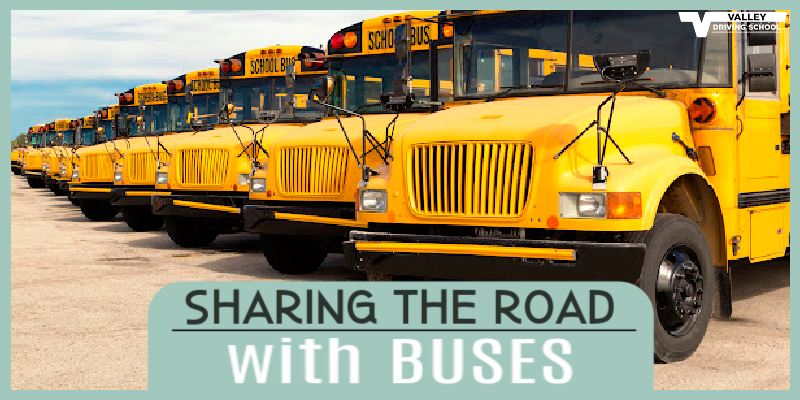
In this post, we’re looking at safely sharing the road with buses.
Following Distances
Buses are much larger than a majority of cars, pick-up trucks, and mini-vans. The sheer size of the bus makes seeing around them more difficult simply because as vehicles get bigger so do the vision blocks! The best way to avoid having vision blocks around a bus is to leave greater following distance between you and the bus.
Here are the general rules for following distances:
- Minimum 2 seconds in cities and towns with lower posted rates of speed
- Minimum 4 seconds on freeways or roadways with higher posted rates of speed
- Add 1 second if you are travelling behind a large vehicle or motorcycle
- Add 1 second if the weather is poor or if the roads are in poor condition
Following too closely to buses and other large vehicles is hazardous because you cannot see what is happening in front of that vehicle, and the driver may not even know you are there if you are too close to be visible to them. These vehicles have blind spots that extend to the front and back of them, as well as blind spots on both the left- and right-hand sides. In the case of an emergency, your available stopping distance is greatly reduced and may affect your ability to stop safely.
When making a lane change in front of another vehicle you can determine if you have given yourself enough space, so you aren’t cutting them off, by ensuring that you are able to see the full front of the vehicle in your rearview mirror. This is especially true for large vehicles, like buses, as they require more distance and space to complete basic maneuvers such as turning and stopping. The stopping distance is much greater than a regular vehicle because their movements need to be more gradual, especially when carrying passengers who may be standing and not secured in their seat.
Right of Way
When following or driving near any type of bus, it’s important to stay vigilant and watch for indications of the buses intended actions.
School Buses
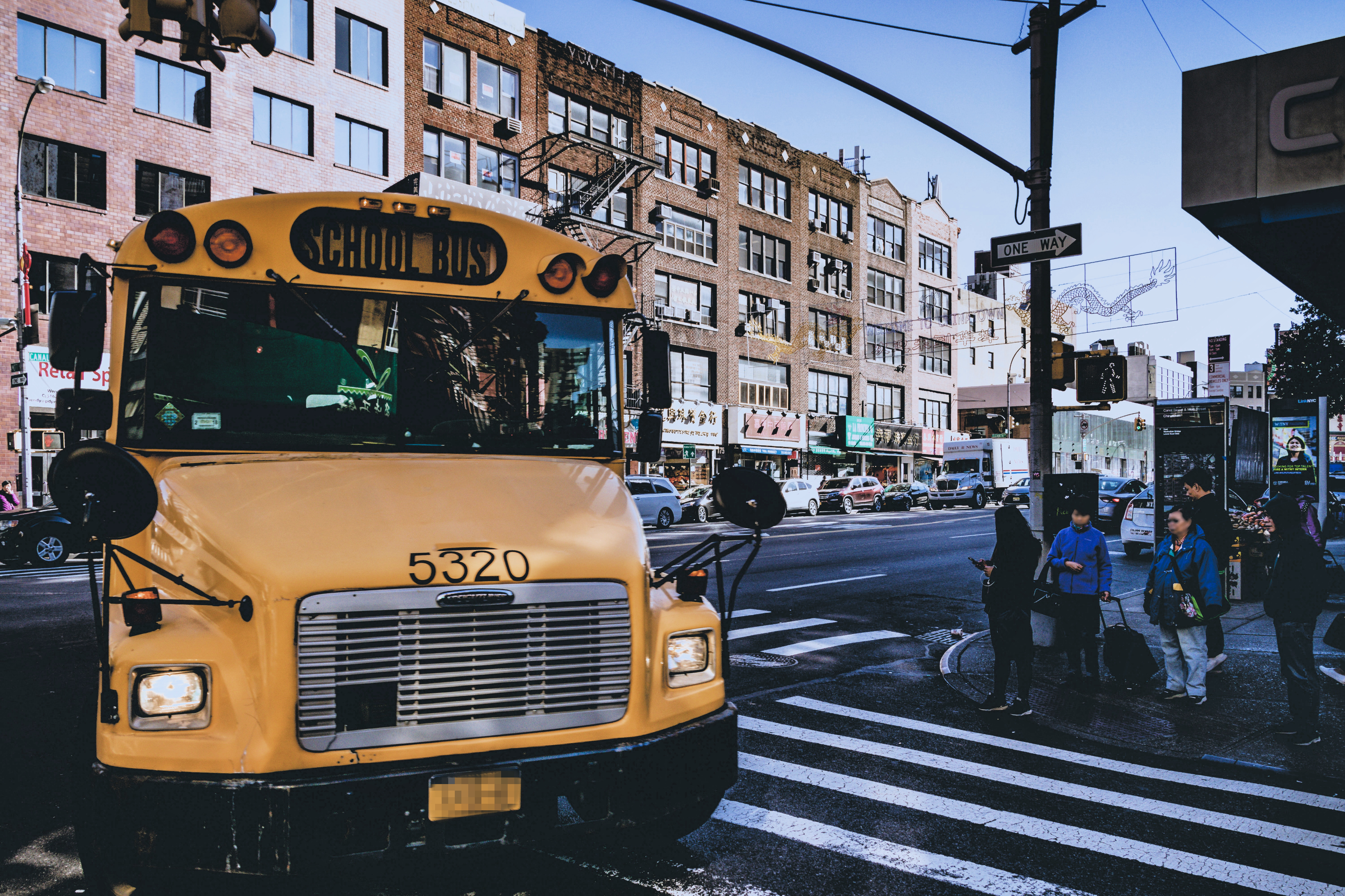
School buses are equipped with amber lights at the top of the bus on the front and back that flash alternatively when the driver is loading/unloading passengers. Driver’s will activate flashing lights and a stop sign may extend from the driver’s side of the bus, indicating that children will be going on or off the bus. When approaching a bus with flashing lights and/or a lowered stop sign all directions and lanes of traffic must stop! Do not proceed until the driver has indicated it is safe to do so, by turning off the flashing lights and/or retracting the stop sign.
If a school bus is stopped without flashing lights or an extended stop sign, drivers are not required to stop, but should proceed with caution as children may have recently exited the bus.
Public Transit Buses
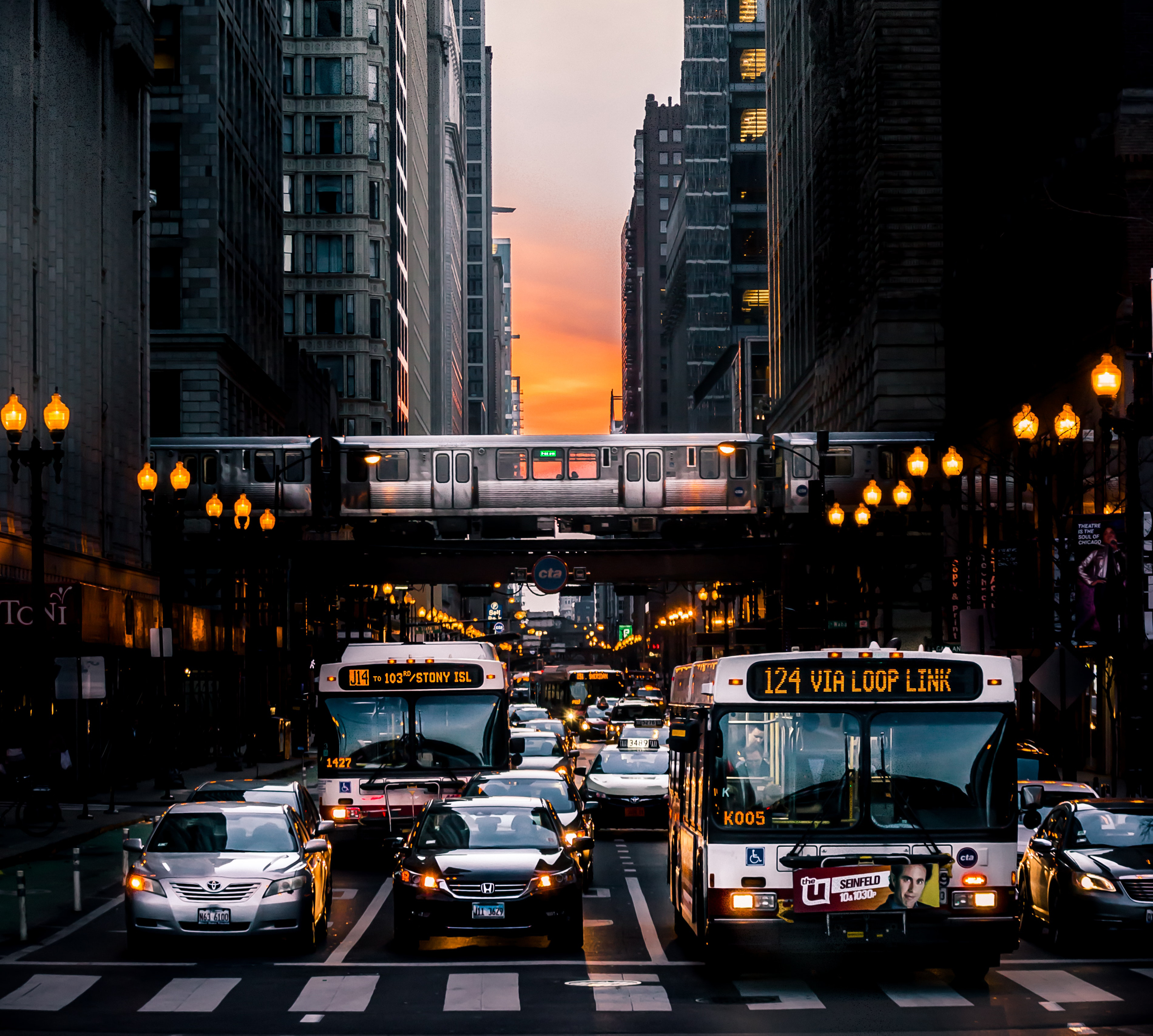
Unlike school buses, you may continue to travel past a public transit bus that has stopped with its indicator light flashing, but you must maintain a safe speed and keep a watchful eye for pedestrians. Where possible, be courteous and change lanes to give a bus more space. The right-of-way varies, depending on the speed limit - with speed limits of 60km/h or less, right-of-way should be given to buses and with speed limits of over 60km/h, buses are to give right-of-way to other traffic.
HandyDART buses vary from large city transit buses in that they make stops at unmarked locations, including residential homes. An important aspect with HandyDART buses is most of them are equipped with a wheelchair lift and some passengers will exit via the lift from the rear of the bus, so it’s important to leave adequate room when stopping behind them to account for the space the lift may need. HandyDART buses will use both direction indicator signals and four-way hazard flashers when stopping to load or unload a passenger.
Road Markings and Signs
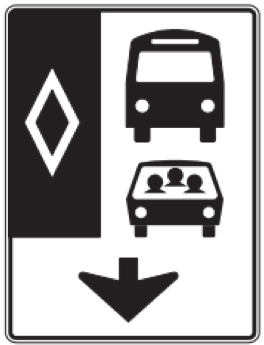
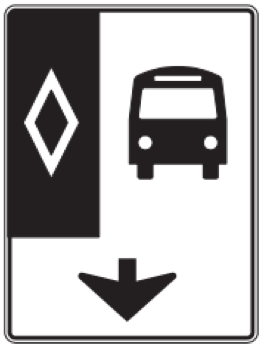
Reserved lane signs have a white background with black details and are displayed above or beside lanes that have a painted white diamond within them. Buses may have their own reserved lanes or share them with other approved HOV users. When travelling in a reserved lane the solid white line separating traffic will be double in width indicating the traffic pattern change from the other lanes of travel. Be aware bus lanes may be the far-left or the far-right lane.
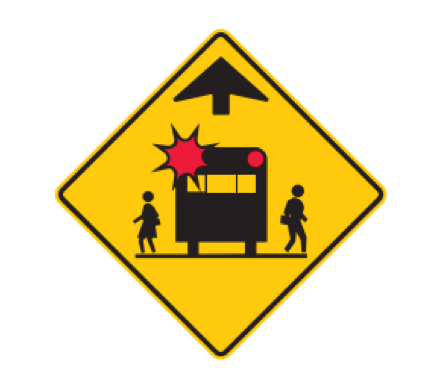 A yellow diamond-shaped sign with an image depicting a bus with flashing red lights and two children indicates a popular school bus stop is ahead. It is important to know that not all school bus stops are identified by this warning sign and drivers should use caution, and watch for children and buses, especially when driving before and after school hours.
A yellow diamond-shaped sign with an image depicting a bus with flashing red lights and two children indicates a popular school bus stop is ahead. It is important to know that not all school bus stops are identified by this warning sign and drivers should use caution, and watch for children and buses, especially when driving before and after school hours.
Bus stop signs are more common in urban areas and may be accompanied by a bus shelter and/or a bench. The sign will indicate the route and may have numbers or letters indicating which buses stop there. Do not park at or near bus stops, even if you are only stopping for a short amount of time, as this can affect traffic flow and the safety of riders and other drivers.
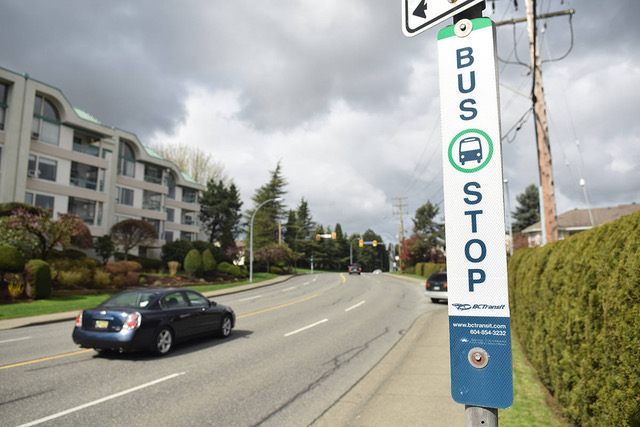
--
When you head out on the road, follow these bus safety tips, take your time, and be courteous. Our roads are getting busier and busier, and the best way to stay safe and keep others safe is to stay informed! Our final challenge to you: If you don’t normally take public transit, give it a try - you’ll gain a whole new perspective on navigating the city.
